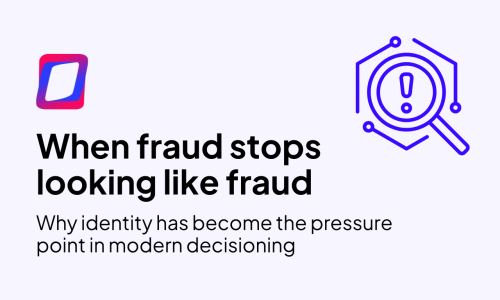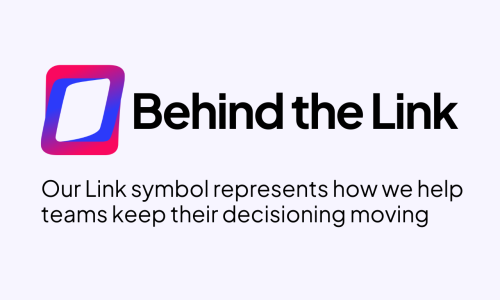Consumer Lending in South Africa: What You Need to Know
South Africa is one of the most exciting lending markets in the world, attracting numerous fintechs and neobanks. But the landscape is changing fast. So, whether you are new to the market or an existing player that’s looking to grow (or retain) its market share, here are a few key trends to understand.
- It’s a market of two halves
Four banks dominate the financial sector. However, as discussed in our podcast with Brett van Aswegen, CEO of Wonga, they typically focus on the middle to higher end of the market, and they use traditional lending criteria when reviewing applications.
With an estimated 20% of South Africans unbanked or underbanked, that leaves millions of consumers who need to find credit elsewhere. That alternative is more than 8,000 non-bank credit providers – a mix of national fintech lenders and small community-based lenders who often know the people they are lending to.
- High demand, high declines
While South Africa saw an improved economic environment in 2024, interest rates remain relatively high, and lower household disposable income has driven demand for credit. According to TransUnion’s Q1 2025 Consumer Pulse study, 37% of respondents plan to apply for new or refinance existing credit within the next year.
However, approval rates have actually declined as providers sought to limit their risk. Traditional banks remain cautious about consumers who don’t meet their credit scoring criteria.
That has opened the door to short-term debt providers and Buy Now, Pay Later (BNPL) services; the latter are particularly popular among younger consumers. Observers also note the growth of alternative payment methods such as vouchers.
With a high demand for credit among unbanked and underbanked consumers and thousands of unregistered, predatory lenders operating in South Africa, there has been a significant push towards financial literacy and inclusion. Part of this is driven by lending regulations around affordability. However, with debt levels still high, lenders are also guided by social responsibility and, of course, their own strategic need to distribute loans that borrowers can repay.
- Alternative routes to credit
As already mentioned, the use of BNPL is growing; according to TransUnion’s Q1 2025 Consumer Pulse study, 52% of all those surveyed have used BNPL services in the past 12 months. This highlights consumers’ interest in alternative loan options, particularly among those with thin credit files or who are considered high-risk by traditional banks. But there’s another factor too. As in other countries, digital-first generations are demonstrating their influence, opting for BNPL as well as new lending products and embedded finance journeys.
- The digital generation(s)
South Africa’s digital natives share similar expectations with their peers worldwide, seeking personalised experiences, data-driven insights, and the convenience and speed of a digital interface. This is likely to become an even stronger trend, considering the median age in South Africa is only 28.7.
News that Revolut is considering entering South Africa underscores the renewed shift towards a digital experience and the potential for market growth. In addition, South Africa’s first fully digital bank, TymeBank, holds unicorn status and has more than 10 million customers.
- Risk and regulation
The National Credit Act of 2005 (NCA) includes an affordability mandate aimed at preventing reckless lending. However, there are an estimated 4,000 lenders operating in the country without a license, and one report found that over 42% of the country’s 23 million credit-active consumers are classified as impaired.
BNPL poses another type of risk. BNPL providers argue that they are not covered by the NCA, and regulators have taken limited action against providers. Meanwhile, while BNPL products initially had relatively conservative limits, major BNPL providers today offer limits of R20,000 to R30,000, which is a substantial exposure for consumers.
The Conduct of Financial Institutions Bill is designed to strengthen regulatory power over financial institutions, including digital providers, and bring more transparency and consistency to the finance sector. However, the bill has not been submitted to the Cabinet yet (although that’s due to occur “shortly”), and there is no schedule for implementing it.
Meanwhile, the government has proposed plans to update the online verification system (OVS) used for real-time identity checks. The updates include dramatically increasing the fees paid by banks and financial institutions, which the government says is needed to invest in the system. The new fees are set to take effect on July 1, 2025.
However, TymeBank has published an open letter in which it argues that the fee increase would make it commercially unviable to serve low-income South Africans and undermine the drive towards digital transformation and financial inclusion. It also called the proposed alternative to the real-time system, offline batch processing, which is unsuitable for the real-time nature of finance today.
Instead, the bank proposed a consultative process with fintechs and other stakeholders, a phased fee structure, volume-based pricing, a cost recovery model linked to performance and inflation, and “reasonable” notice periods that allow institutions to plan and budget accordingly.
- Fraud is spiking
As with the rest of the world, fraud is a growing problem in South Africa, and as consumers turn to digital services, so do criminals. In 2023, financial product application fraud experienced a significant increase. Vehicle asset finance fraud saw more than a 100% increase in reported cases.
51% of respondents to TransUnion’s survey reported being targeted by email, online, phone call, or text messaging fraud in the last three months, but not falling victim. While these consumers didn’t fall prey to the fraud attempts, the figure emphasizes the importance of heightened security awareness for both consumers and lenders.
3 Keys to Success
The South African lending market has numerous nuances, but in many ways, it’s similar to other markets. Keep to these three principles to simplify lending in South Africa:
- Accurate data and risk analysis
With so much of the population unlikely to meet traditional lending criteria, it’s especially important to build more complete credit profiles and accurately assess credit risk. That requires modern, integrated credit decisioning technology and access to alternative data sources across all stages of the lifecycle.
- Personalized, digital experiences
AI and machine learning provide the speed and intelligence to meet consumer expectations and protect your business. From offers tailored to each consumer to quickly disbursing funds and ongoing customer management and retention, you can provide each borrower with the experience they expect. At the same time, you can satisfy internal requirements to protect the portfolio with predictive analytics.
- Strong fraud prevention and detection
AI and machine learning can also protect you from fraud while simultaneously building borrower trust. Combine those technologies with real-time decisioning and data orchestration, you can:
- Assess creditworthiness and fraud risk at the same time, reducing false declines while preventing bad actors from slipping through
- Accelerate onboarding while running fraud checks in the background
- Detect suspicious activity before losses occur
- Improve approval rates without sacrificing accuracy or compliance
GDS Link has significant experience in the South African lending market, with long-standing clients that include market leaders Boodle, TymeBank, and Wonga. So if you want to grow in this exciting market, then we’re here to talk. Schedule a time below to meet with a GDS Link team member:
Recent articles

When Fraud Stops Looking Like Fraud
Read article
Behind the Link
Read article





